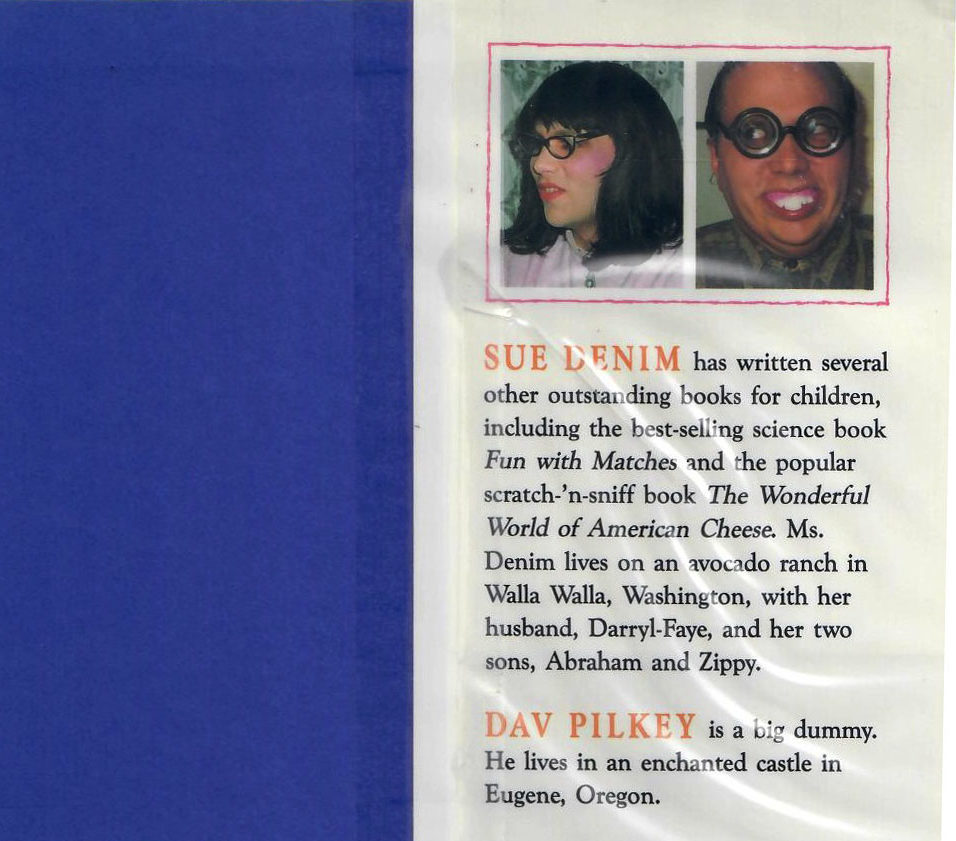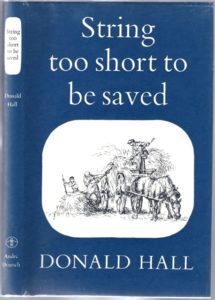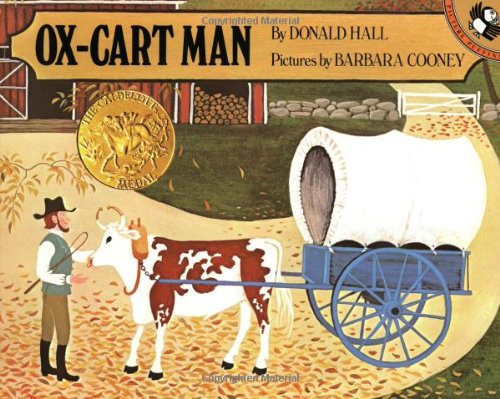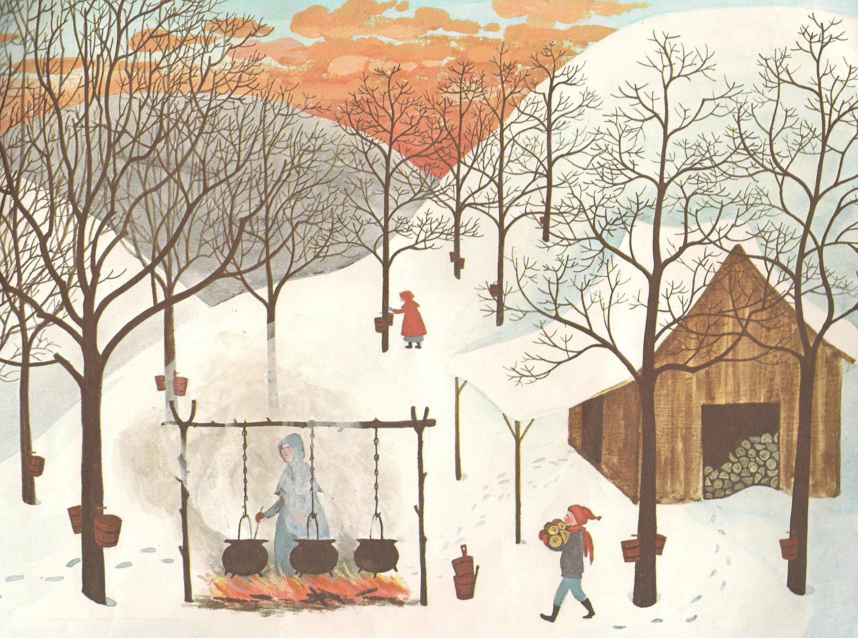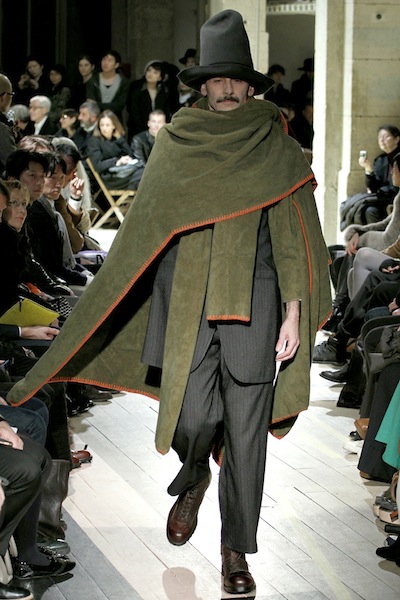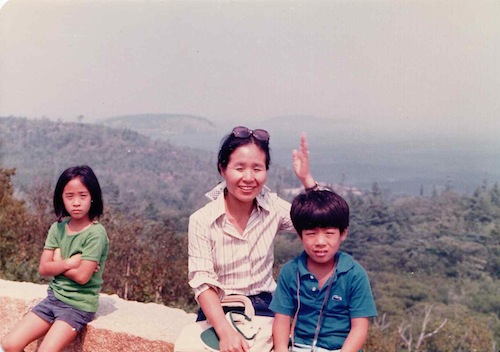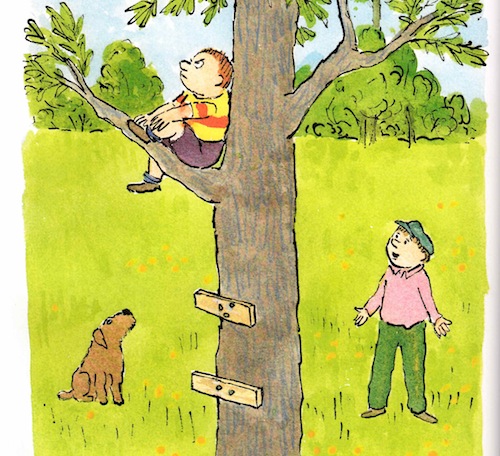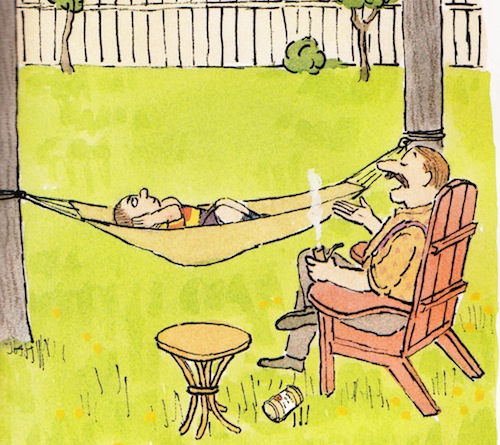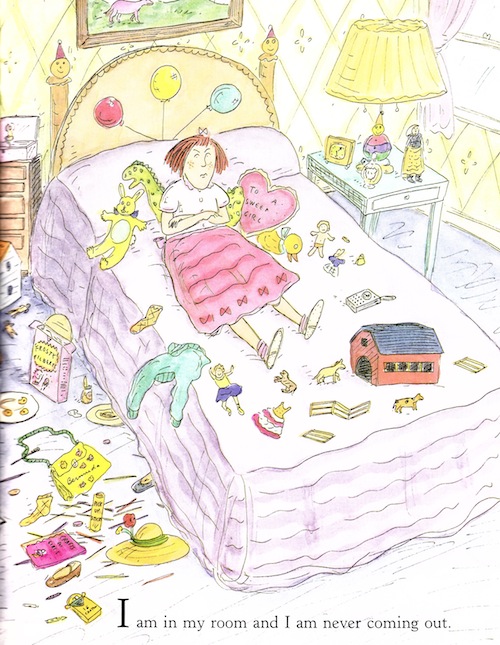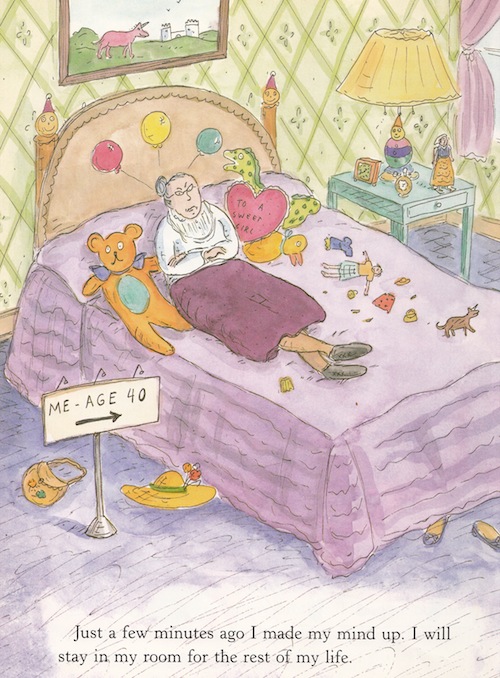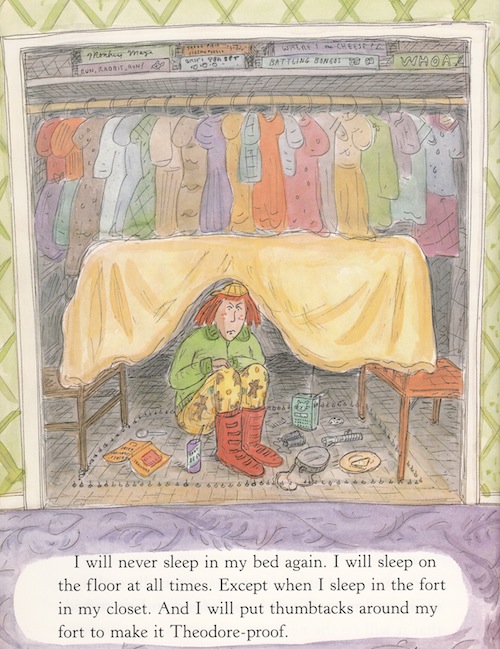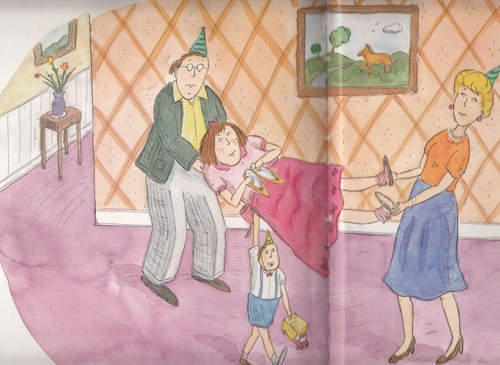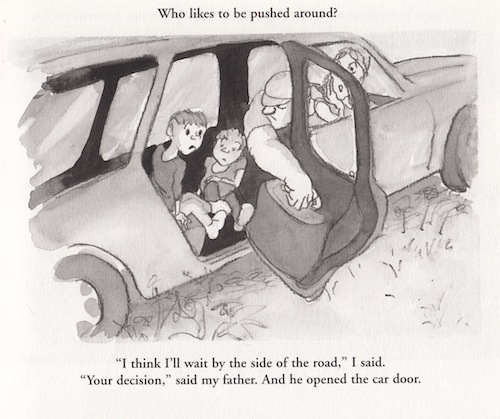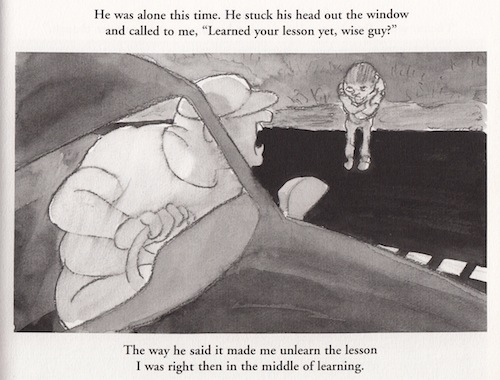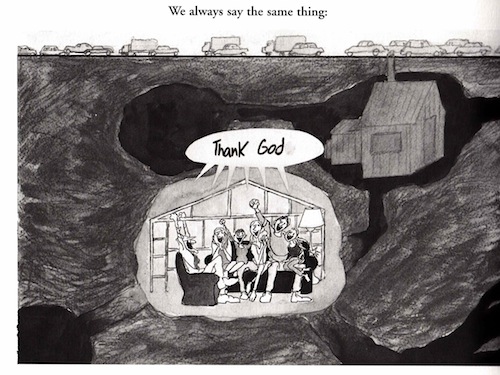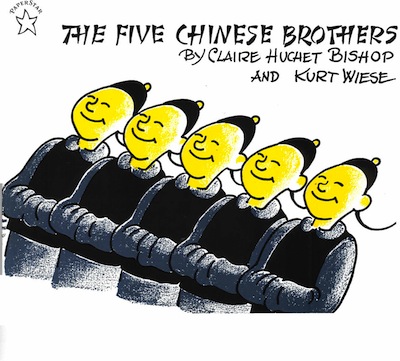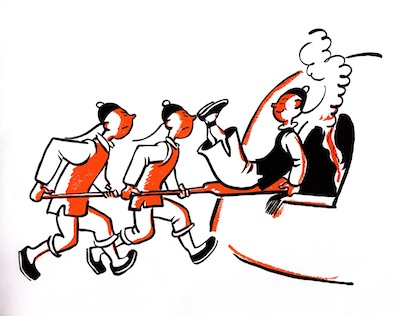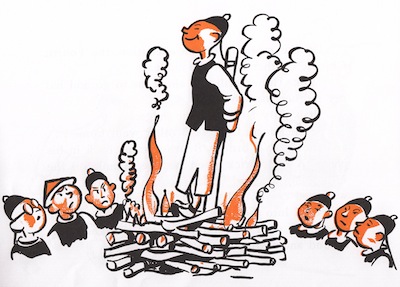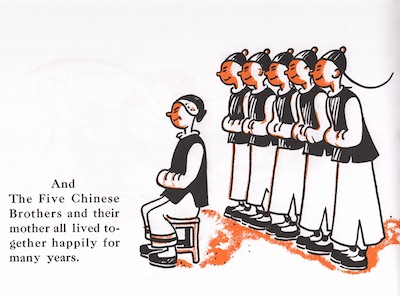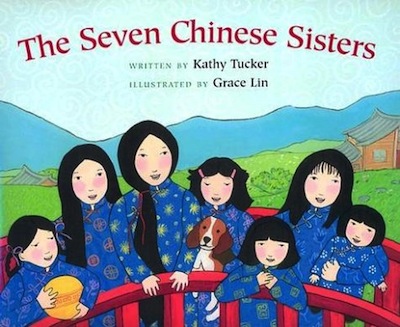French illustrator Jean Jullien’s drawings are simple, friendly and naive in style. His lines are loose, his colors are bold and his people have U-shaped noses. Everything he draws has the effortless appeal of a perfect chocolate chip cookie.
But Jullien, who lives in London and contributes to The New Yorker and The New York Times, really trades in ideas. He’s a creative prankster who transforms familiar scenarios into a witty commentary on contemporary life. Sometimes his observations are gentle and funny, like this one: 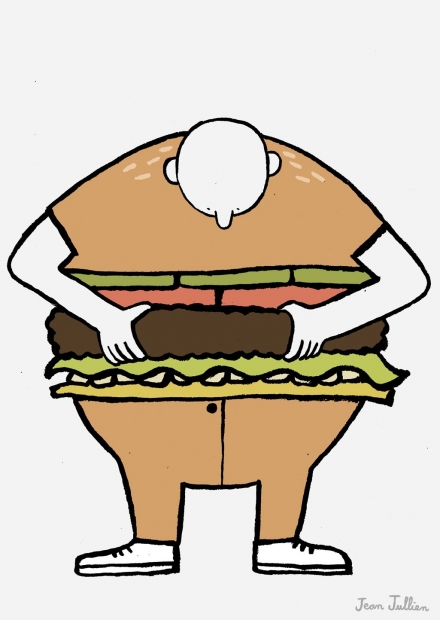
Sometimes his images are unapologetically political. There was this powerful illustration following the violence in Ferguson, MO. And Jullien found himself the unexpected object of media attention after he Instagrammed his simple, powerful image of the Eiffel Tower crossed with the peace symbol right after the 2015 Paris terrorist attacks. (The drawing went viral. More about it here.)
 Last year, Jullien published his first children’s book, the brilliant This is Not a Book, which played with the simple physicality of a rectangular board book. With each spread, Jullien transformed the book into a series of whimsical objects: a laptop, a monster’s mouth, a tightrope, a naked rear end. Now, Phaidon has published his second book, Before & After, and it’s (dare I say it?) even better.
Last year, Jullien published his first children’s book, the brilliant This is Not a Book, which played with the simple physicality of a rectangular board book. With each spread, Jullien transformed the book into a series of whimsical objects: a laptop, a monster’s mouth, a tightrope, a naked rear end. Now, Phaidon has published his second book, Before & After, and it’s (dare I say it?) even better.
The concept is simple — showing toddlers the meaning of “before” and “after.” Before: a dirty cat is licking its paw. After: the cat is clean.
But naturally, the artist doesn’t leave it at that. Jullien plays with the predictability of the pairings, delivering narratives that are by turns funny, surprising and even thought provoking. It’s not all as straightforward as simple cause and effect. There’s often a missing piece to his scenarios— a beat of the story that’s implied but not spelled out. Sometimes it’s psychological. Sometimes it’s existential.
In short, it’s a delight. Each glossy page exhibits a beautiful economy of words and lines, everything meaningful, nothing superfluous. This is a board book that a two-year-old can enjoy, an eight-year-old will giggle over and a fully-grown lover of modern design will marvel at.
PS This short video about Jullien is totally worth watching. Show it to your kids, too!

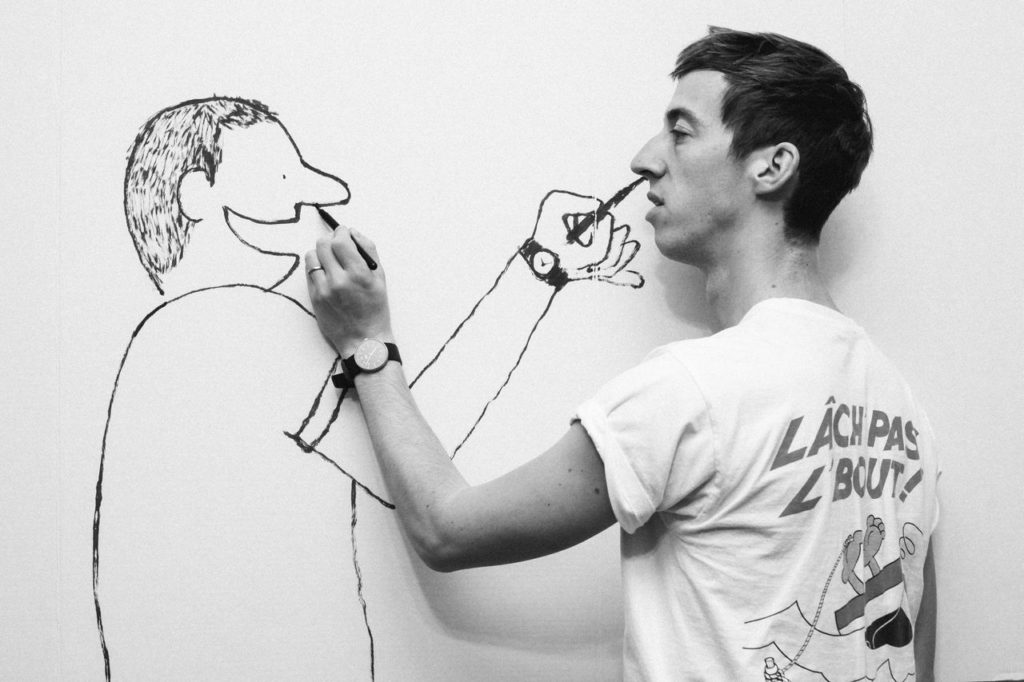
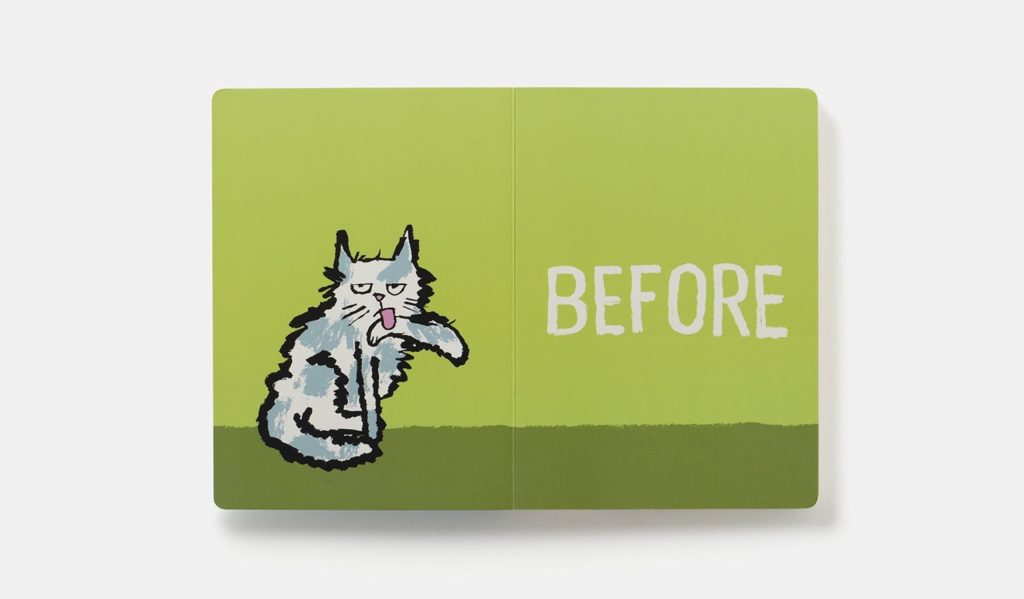

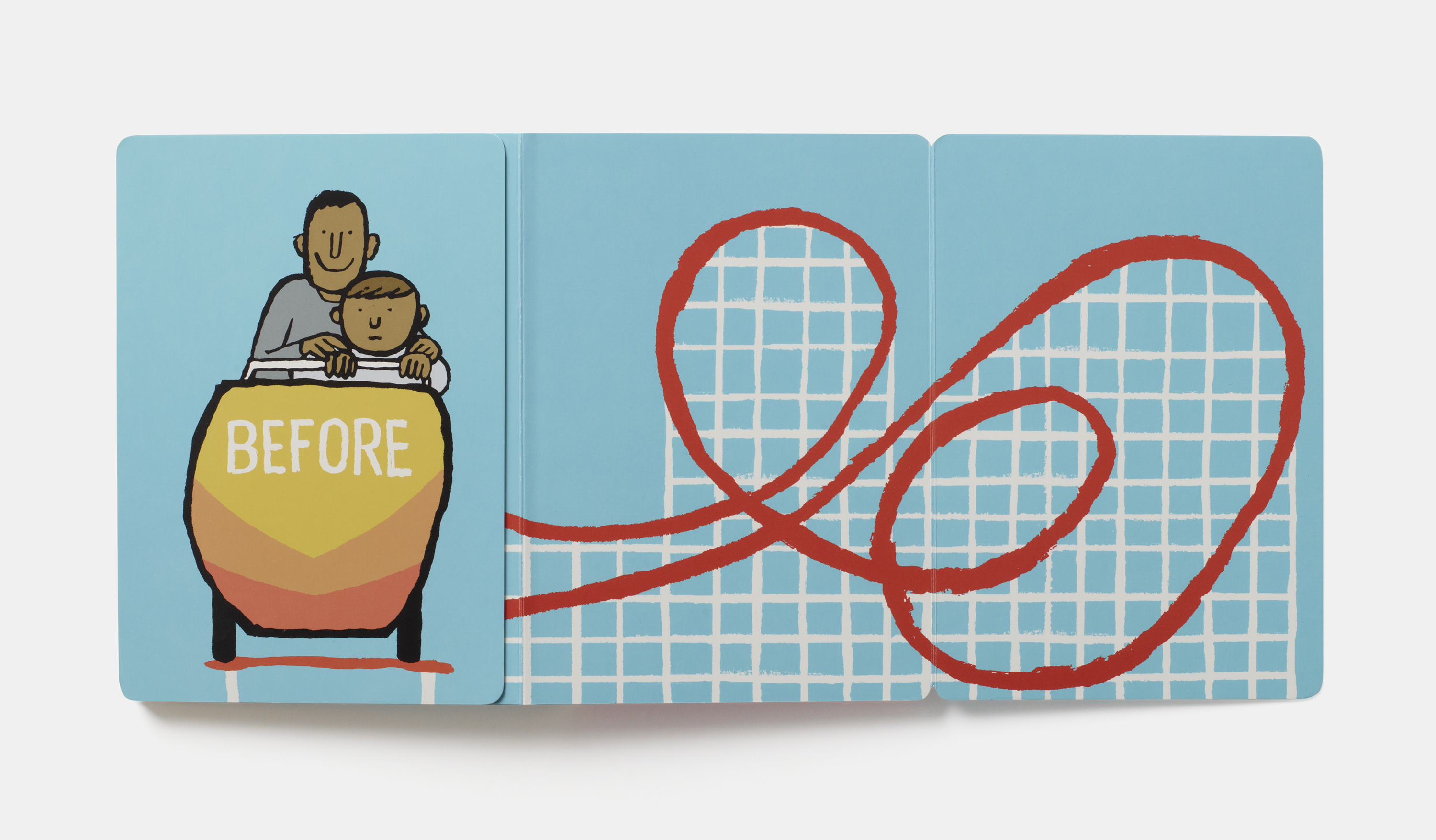
 There are so many reasons to love Jenny Slate. The 35-year-old comedian-actress is funny, sexy, fiercely feminist, and just goofy enough that you feel like she could be someone you know. I loved her in Obvious Child (the 2014 indie film that flaunted both her ingenue radiance and raunchy potty mouth) and to this day I cannot order a sandwich without thinking about
There are so many reasons to love Jenny Slate. The 35-year-old comedian-actress is funny, sexy, fiercely feminist, and just goofy enough that you feel like she could be someone you know. I loved her in Obvious Child (the 2014 indie film that flaunted both her ingenue radiance and raunchy potty mouth) and to this day I cannot order a sandwich without thinking about 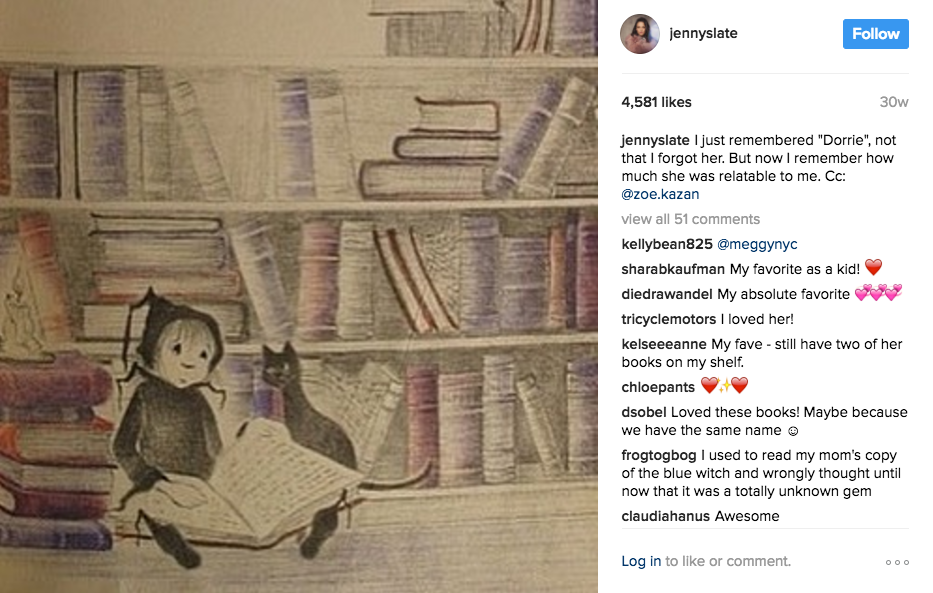
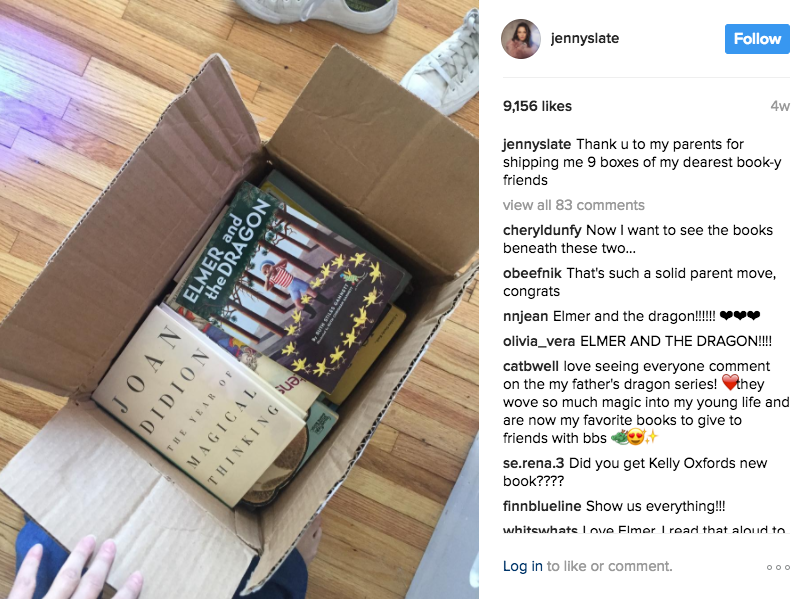
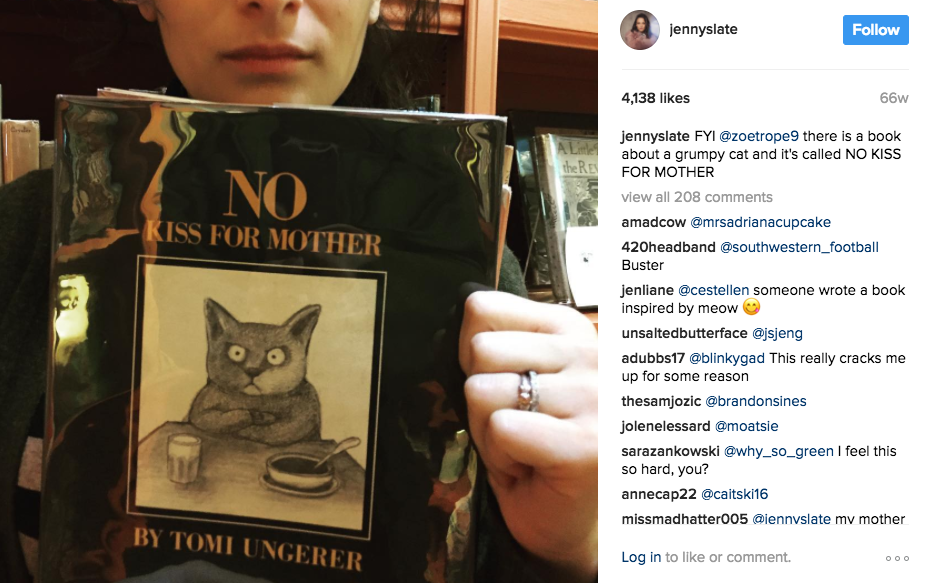
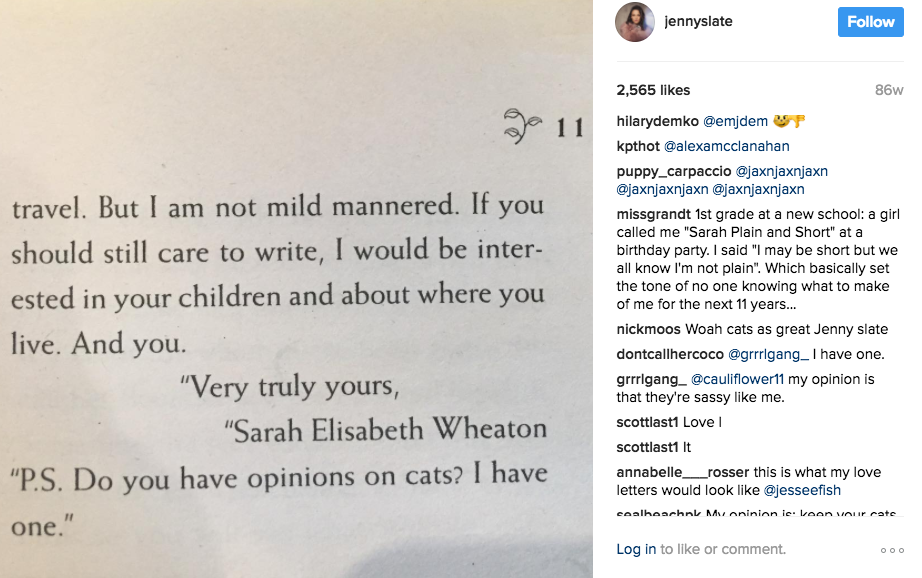
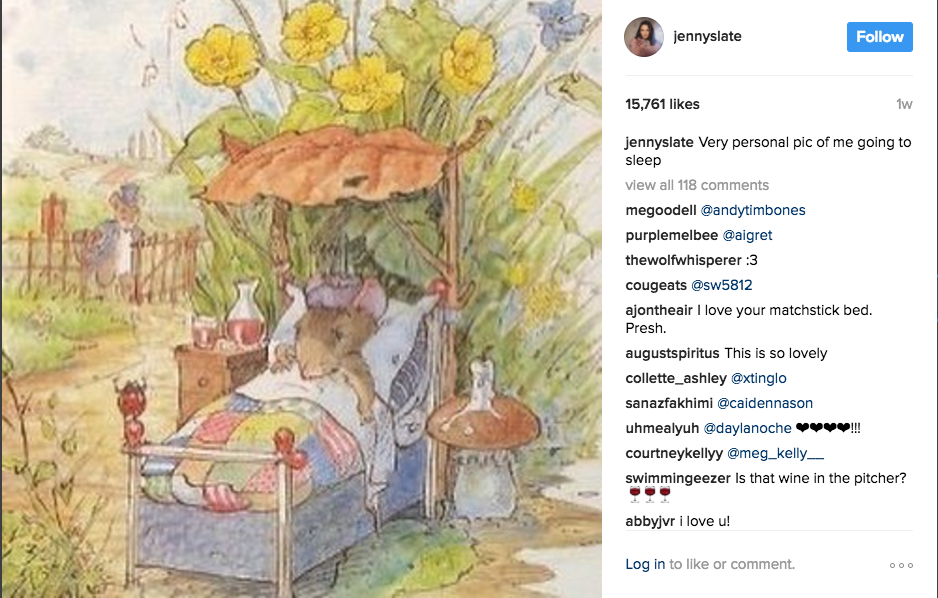
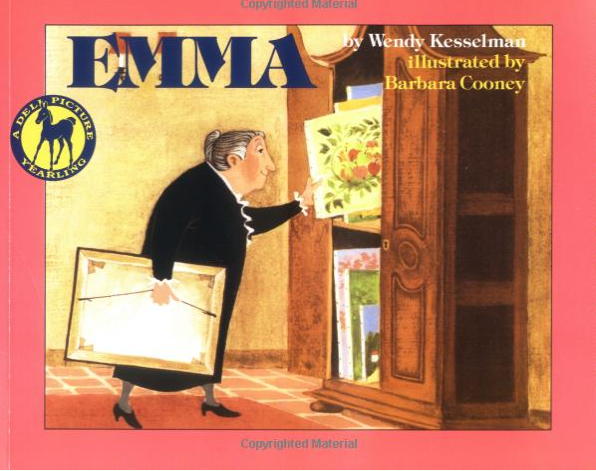 “It’s about an old woman who doesn’t love how she’s alone, and then learns to make herself not alone through art, and draws people into her life through art. It’s the fucking best thing.”
“It’s about an old woman who doesn’t love how she’s alone, and then learns to make herself not alone through art, and draws people into her life through art. It’s the fucking best thing.”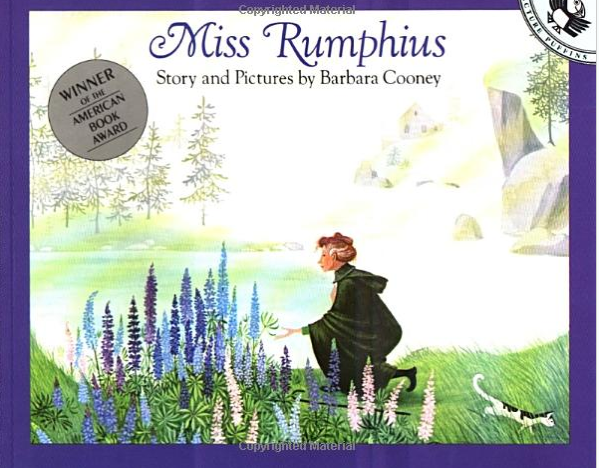
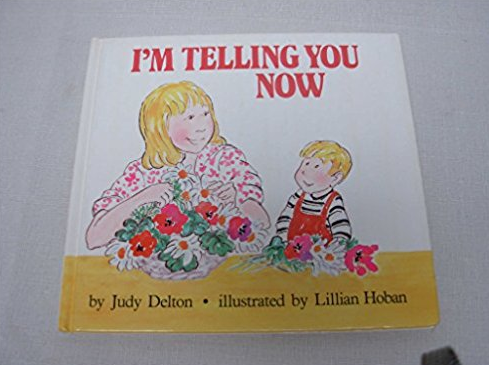
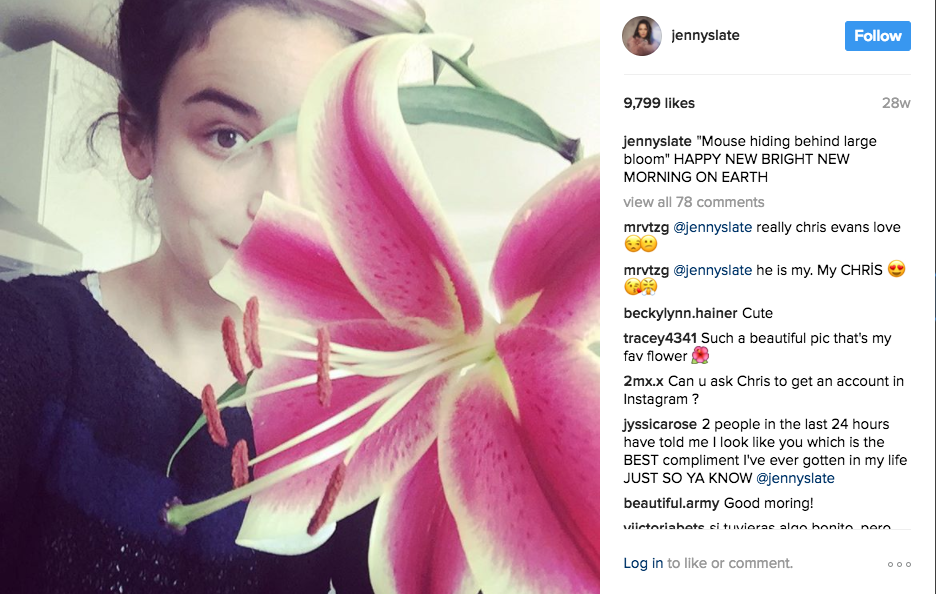
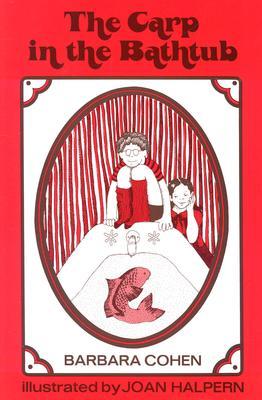 I’m Korean, but I grew up in Great Neck and I was obsessed with the
I’m Korean, but I grew up in Great Neck and I was obsessed with the 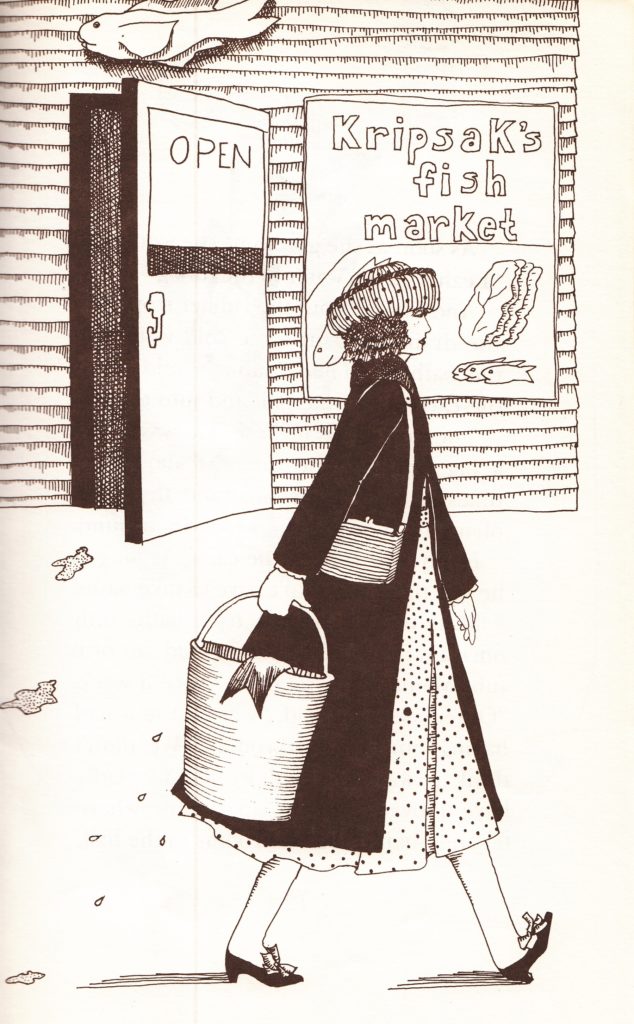 The family’s tub carp is a beloved annual ritual. The kids don’t have to bathe for a whole week and it’s the closest they ever get to having a pet.
The family’s tub carp is a beloved annual ritual. The kids don’t have to bathe for a whole week and it’s the closest they ever get to having a pet.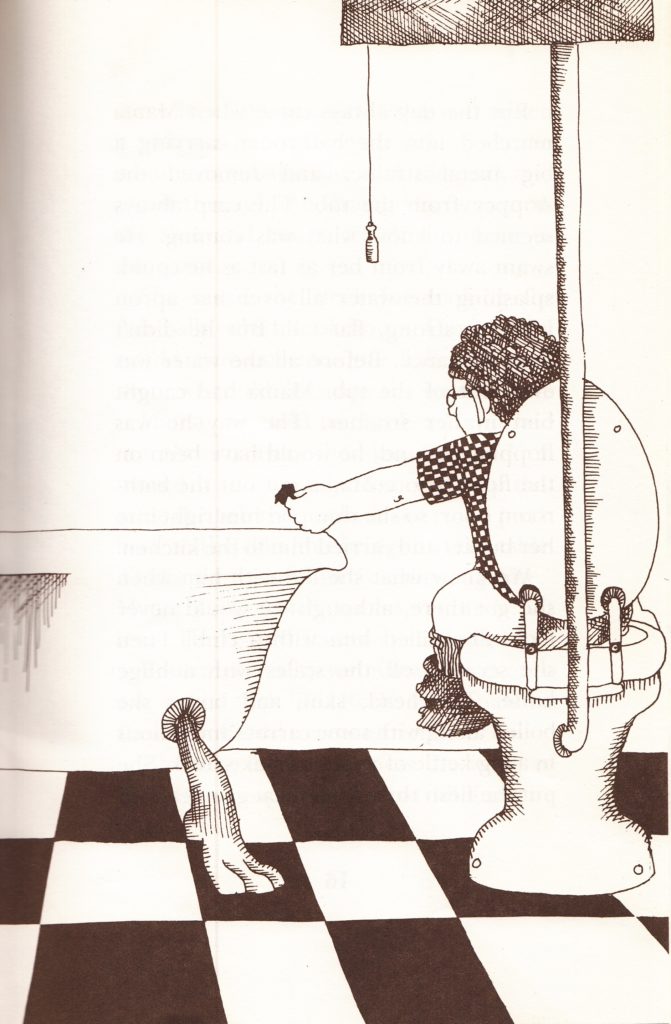
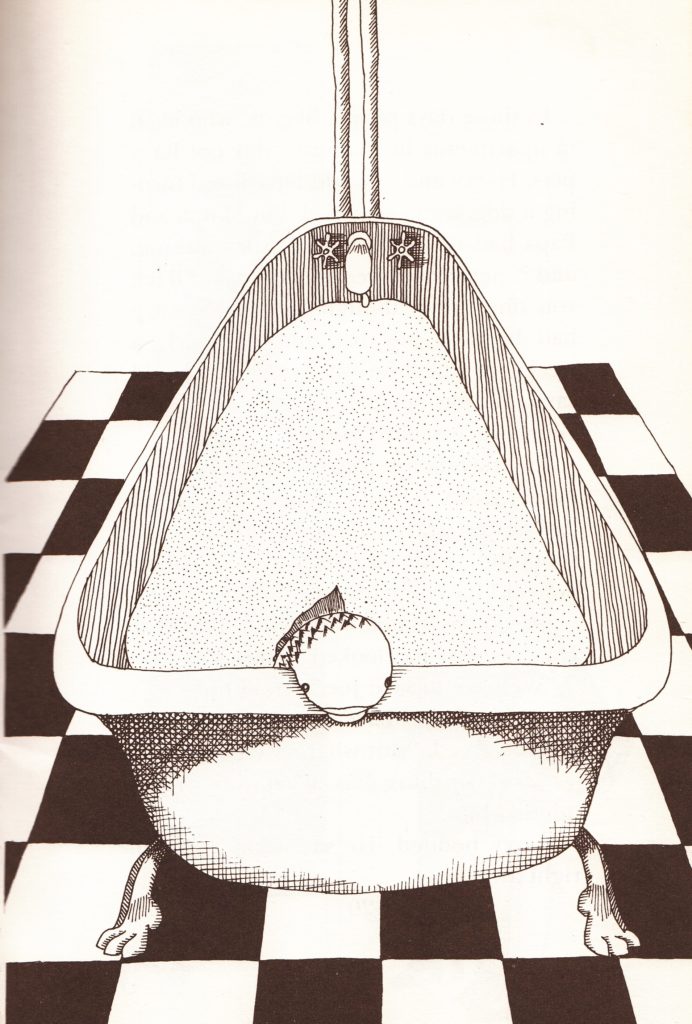
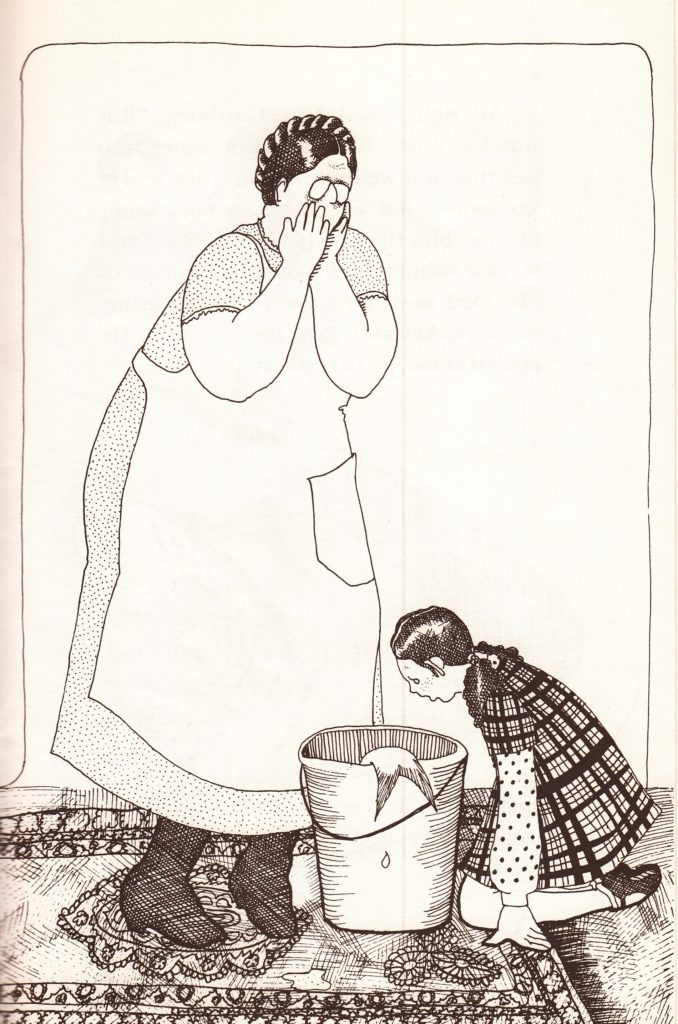
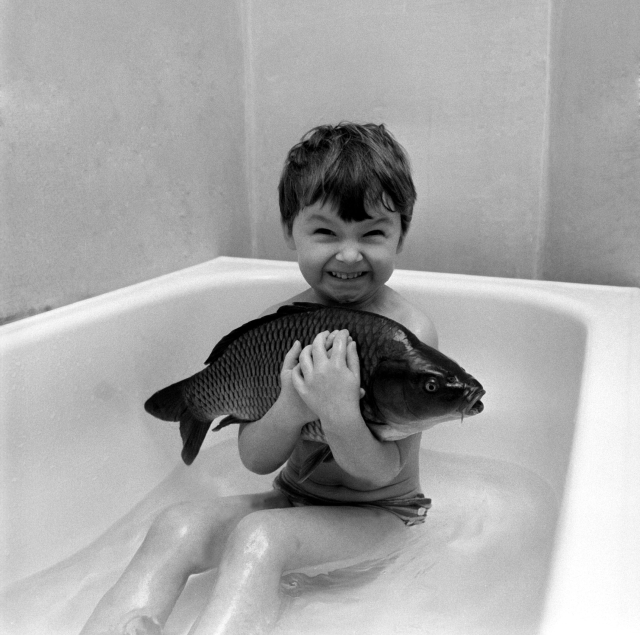
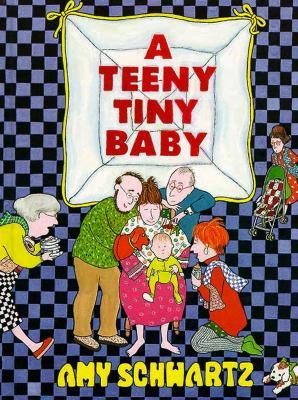
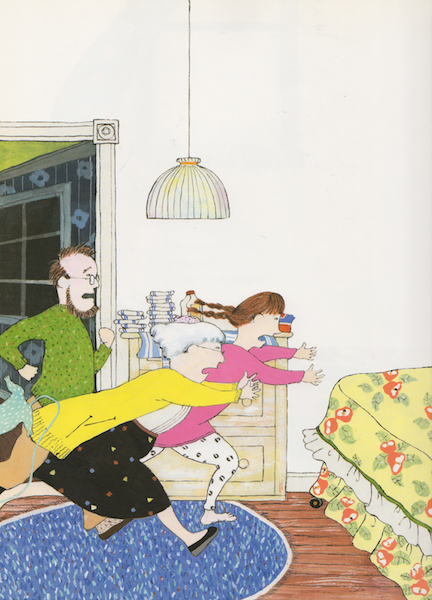 The story is told from the perspective of an infant in Brooklyn in his first few weeks of life. He reports his experiences at the center of the household —everybody cooing and fussing over him — in the most matter-of-fact way.
The story is told from the perspective of an infant in Brooklyn in his first few weeks of life. He reports his experiences at the center of the household —everybody cooing and fussing over him — in the most matter-of-fact way.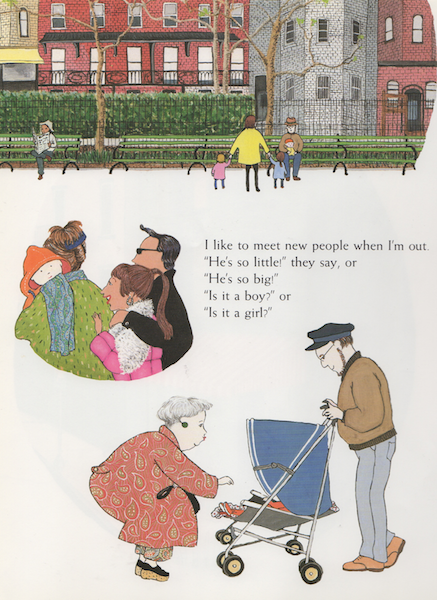
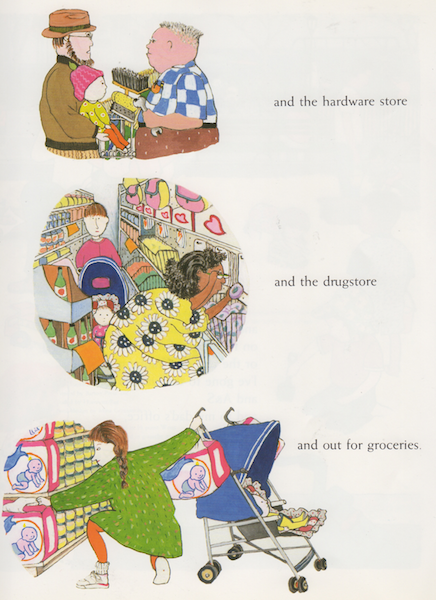
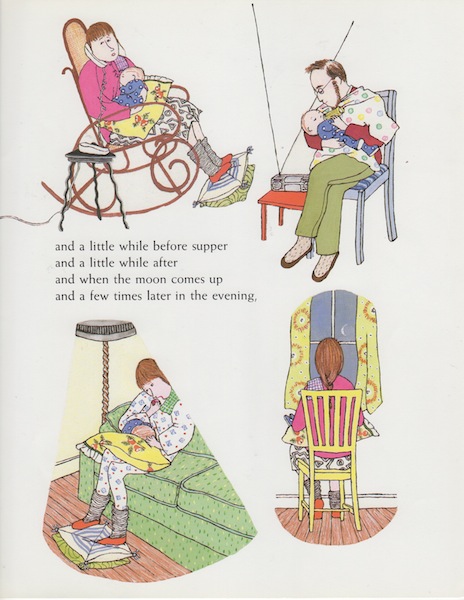 After the Teeny Tiny Baby hardcovers disappeared from Amazon, I noticed you could still find board book versions of the book. So I bought a few and gave those as gifts. But these days I can only find secondhand copies of this incredible book for sale. Heartbreaking!
After the Teeny Tiny Baby hardcovers disappeared from Amazon, I noticed you could still find board book versions of the book. So I bought a few and gave those as gifts. But these days I can only find secondhand copies of this incredible book for sale. Heartbreaking!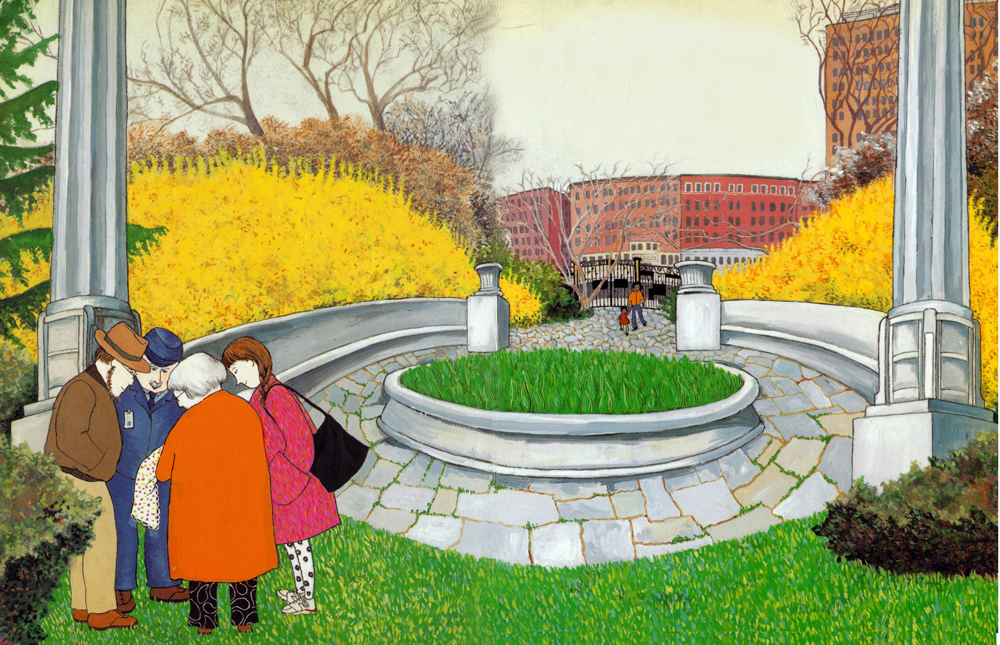 I might have to buy some used copies as gifts. I know this might gross out some new moms so maybe I’ll also include a bottle of Purell.
I might have to buy some used copies as gifts. I know this might gross out some new moms so maybe I’ll also include a bottle of Purell.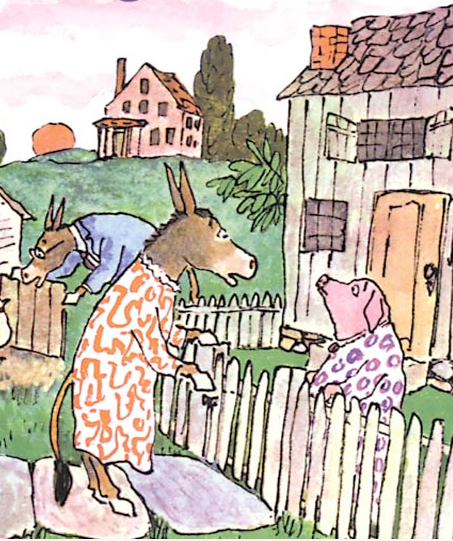
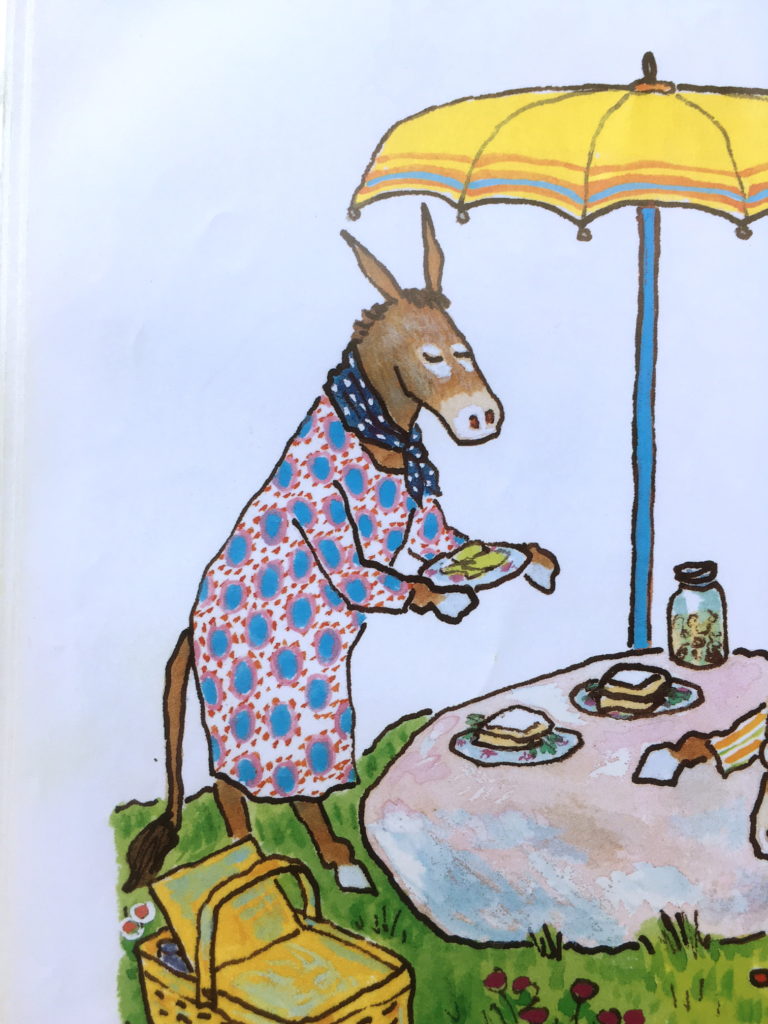

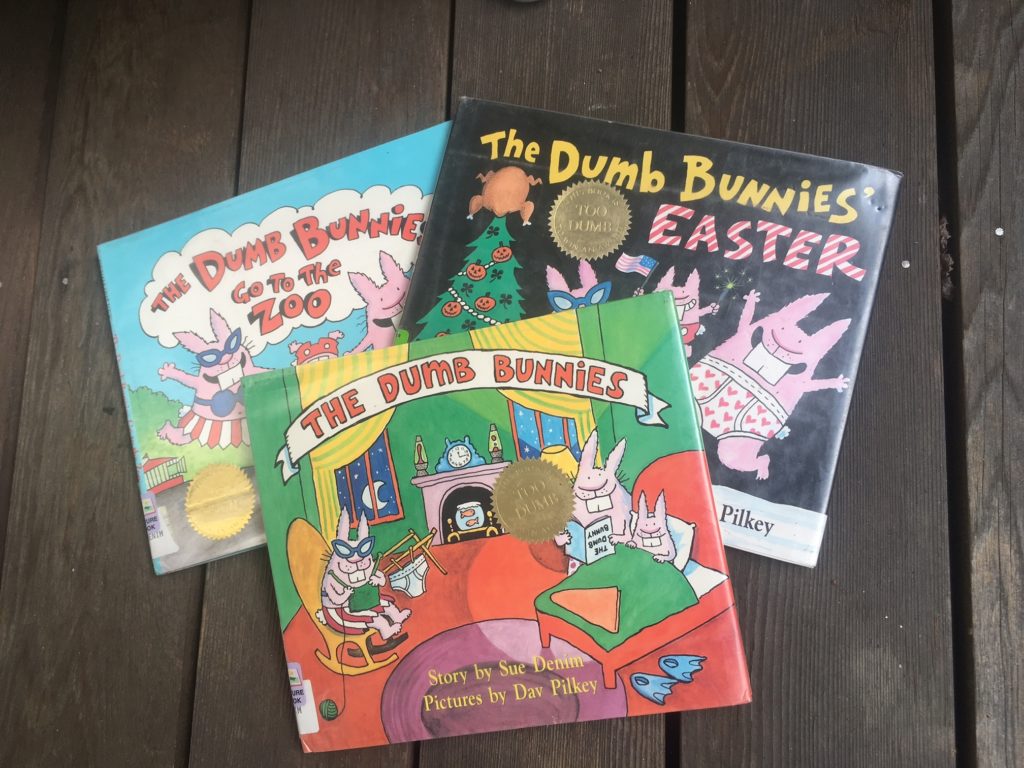 The four-book series is centered around a family of, yep, dumb bunnies who cheerfully go through life underestimating danger, misinterpreting signage and wearing their underwear over their pants. With their punny wordplay, the books remind me a lot of the
The four-book series is centered around a family of, yep, dumb bunnies who cheerfully go through life underestimating danger, misinterpreting signage and wearing their underwear over their pants. With their punny wordplay, the books remind me a lot of the 